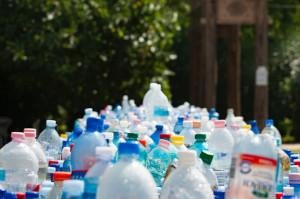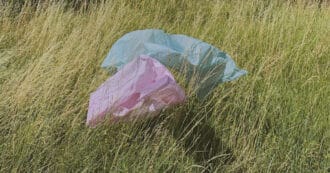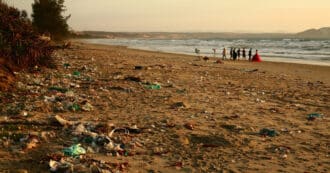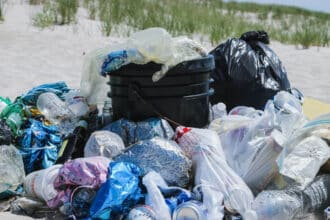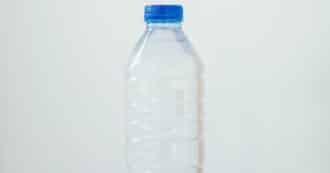By Sydney Cohen – Downcycling is the process of turning waste materials into new products of lesser quality. This is often done as a way to reduce the amount of waste that is produced, and it can be a sustainable way to reuse materials. This can be done by either reprocessing the material into a new product that uses less of the original material, or by using the material in a way that does not require as much processing.
For example, when you recycle a plastic bottle, it can be turned into a lesser-quality plastic product like a park bench or PVC flooring. In this blog post, we will discuss the benefits and drawbacks of downcycling and provide some examples of how it can be used in everyday life.
Downcycling to Reduce Plastic Pollution
The world is facing a plastic pollution crisis. Plastic bottles are a major contributor to this problem. It is estimated that over 500 billion plastic bottles are produced each year, and that number is growing.
Most of these plastic bottles end up in landfills or the ocean, where they pollute the planet’s ecosystems. Some of them are recycled.
Did you know that there is a whole process that happens between the time you toss your empty water bottle, plastic bags, or other plastic products in the recycling bin and the time it becomes a new plastic product? A process that is very energy intensive, producing its own waste materials. That’s right – there’s a lot more to recycling plastic than just tossing it in a bin.
Downcycling Plastic Into Fleece
There are a variety of fleece and carpeting materials that can be produced from downcycling plastic. Downcycling breaks down the original materials into their component parts and then rebuilds them into something new.
There has been a recent trend in the fleece and carpeting industries to use downcycled materials in their products. This is great news for the planet, as it helps reduce plastic waste and conserves resources.
However, there is a downside to this trend: carpeting or fleece fibers made from recycled materials often have lower quality than those made from virgin materials.
The Benefits of Downcycling Plastic
Downcycling uses various recyclable materials from plastic waste to create fleece fibers as well as a variety of plastic lumber products used in construction. Downcycling eliminates the need to use raw materials and create more plastic products.
Downcycling reduces the consumption of more raw materials because it repurposes used plastic waste. It also reduces “the energy usage, greenhouse gas emissions, air pollution, and water pollution of primary production and resource extraction”.
Downcycling is similar to other recycling processes. Downcycling plastic waste results in the production of plastic products of lower value and quality, whereas the open-loop recycling process “denotes a situation where the secondary material is used in a different product system than the original material”.
However, experts argue on whether the benefits of downcycling outweigh the disadvantages.
The Downsides to Downcycling
Downcycling is often done as a way to reduce environmental impact since it results in less material being wasted. While it may seem like a more environmentally friendly option than simply throwing materials away, there are some significant downsides to downcycling that you should be aware of.
Downcycling has rather large manufacturing costs. Currently, in the US, recycling is more expensive than simply throwing away trash. It also produces lower quality products from waste, that are more likely to quickly degrade into harmful substances.
The downcycling of plastic, for example, can ultimately contribute to microplastics in the environment, as the downcycled products break down easier. When they eventually reach landfills, they can degrade into tiny particles that are harmful to the environment and human health.
Downcycling and Religion
Downcycling is a great way to keep resources out of the dump, but it’s still problematic in that it means reducing the overall quality of the resource. Things cannot be downcycled endlessly. Each time they are downcycled, they become lower and lower quality, useful for fewer and fewer things. In other words, downcycling follows the same trajectory as other products that end up as trash, namely, “cradle to grave.”
What upcycling offers is a different paradigm “cradle to cradle” in the words of upcycling pioneers William McDonough and Michael Braungart.
Aimee Moiso, an ordained minister in the Presbyterian Church and PhD candidate at Vanderbilt University discusses all this in her article “Upcycling and Christian Conflict Transformation.” In the words of Moiso “the future-oriented practice of upcycling ties us to others we cannot see and may never know, deepening our sense of interdependence and the shared reality of our world. It is an imaginative perspective that keeps the future bright with possibilities and mirrors the Christian hope in the endlessly redemptive and inventive power of God”.
In other words, practices like downcycling, and upcycling in particular, can broaden our perspective. Living a religious life with upcycling and downcycling is a testament to our Creator that just as every person was created with a purpose, so too was every material item. It is up to us to reveal that purpose and achieve redemption in the process.
Is Downcycling an Eco-Friendly Solution to Waste?
Common misconceptions by the public are that products can be recycled over and over without losing quality. However, the quality of the recyclable materials is reduced with each downcycling process.
A more environmentally friendly recycling process is upcycling, which turns the recycled material into a higher quality product. This process poses fewer threats to the environment than downcycling does.
And let’s not forget, best of all is to simply reduce what we buy in the first place. Then there’s no need to find new uses and use energy to transform old products.
* Featured image source



